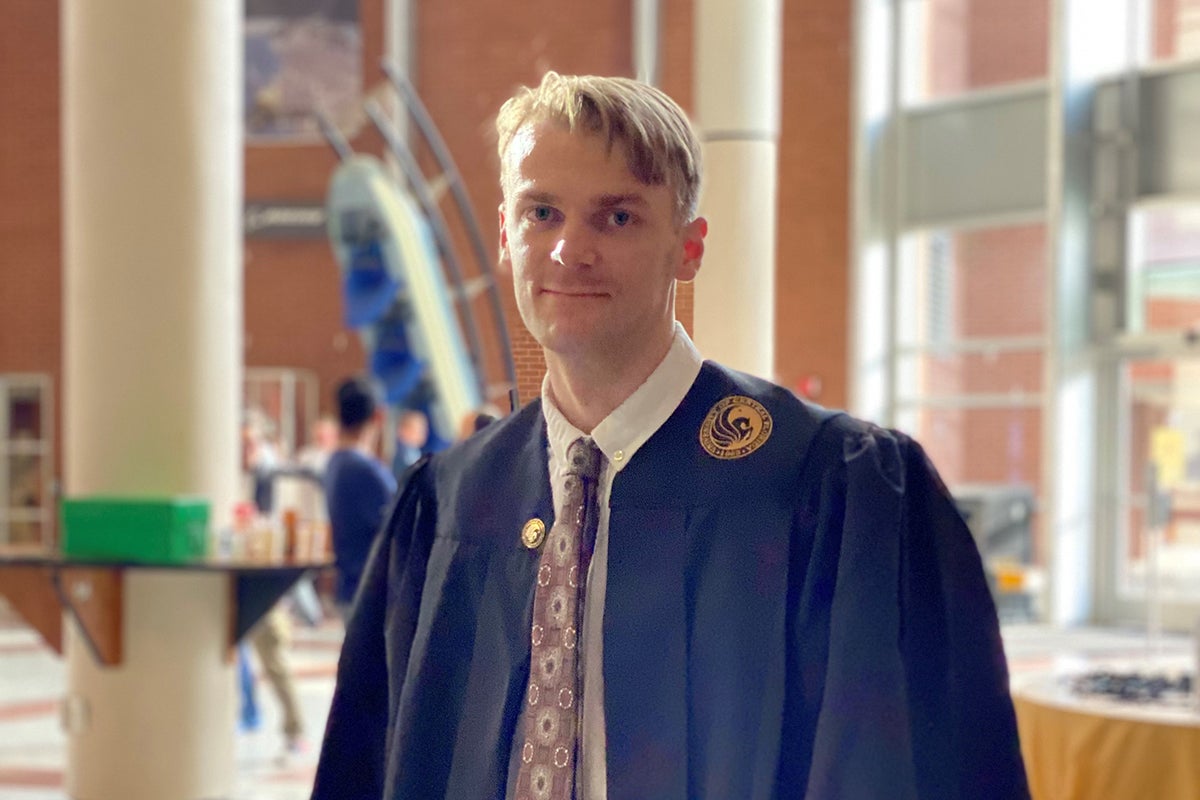Just one small piece of space debris can damage or disable a satellite. Much of this debris, also known as space junk, is catalogued through space-based space surveillance, which uses optical sensors to track objects in orbit that could pose a risk for collision. However, some objects can be too small to track.
UCF aerospace engineering doctoral student Ryan Ketzner ’22 aims to improve the design of these space-based space surveillance constellations through his upcoming research experience with NASA.
Ketzner has been awarded the prestigious NASA Space Technology Graduate Research Opportunity, which is given to approximately 65 graduate students from across the U.S. who show significant potential to contribute to NASA’s goal of creating innovative space technologies. He is the only student from UCF to win the award this year.
Ketzner, who is advised by Assistant Professor Tarek Elgohary, looks forward to collaborating with NASA scientists once again.
“I worked with a research team at NASA Ames during an internship a couple of years back, and I really loved that environment. I actually looked forward to the weekly two-hour meetings,” says Ketzner, who earned a bachelor’s in mechanical engineering from UCF. “The NASA research community is just full of knowledgeable, driven people working on really fascinating problems, and the NSTGRO program will be a great way to get plugged in to that.”
The NSTGRO program offers up to $80,000 in grant funding that includes a student stipend, the cost of tuition and fees, and a visiting technologist experience allowance. That allowance enables each student to travel to a NASA facility to conduct research in collaboration with a subject matter expert. Ketzner has been paired with Matthew Dosberg, the digital transformation lead at the Goddard Space Flight Center in Maryland.
Under Dosberg’s guidance, Ketzner will develop computational methods that could improve the design of distributed space missions, which involve the use of multiple satellites that collaborate toward a common goal. He will specifically focus on the design of satellite constellations that use optical sensors to identify debris from orbit.
“Optical sensors are much more capable of detecting small objects when making observations against a space background, without atmospheric interference, so a space-based approach has the potential to improve characterization of debris that is too small to make the current catalog, but still big enough to disable a satellite,” Ketzner says. “A lot of the methods accumulated from decades of experience in earth-oriented satellite constellation design don’t quite transfer one-to-one to space-observing constellations, so there are still fundamental questions about the orbit geometry that have not been addressed in detail.”
Ketzner says this opportunity to collaborate with NASA will help to keep his research targeted and relevant.
“A big part of research is assessing the current state of the art and finding ways to tinker with it, which can be difficult to do from the outside,” he says. “Having a window into current NASA processes will be invaluable.”




